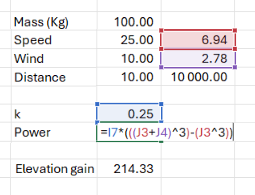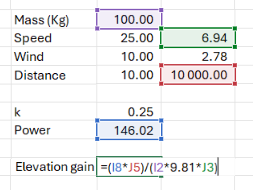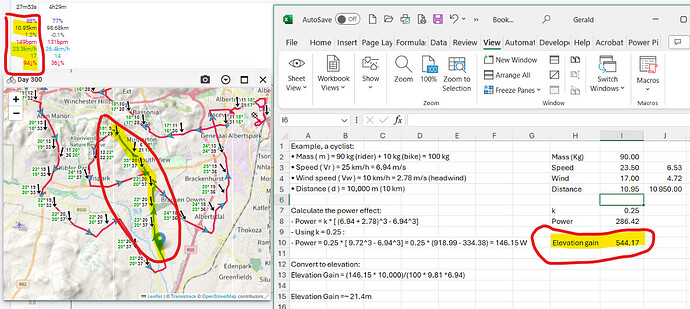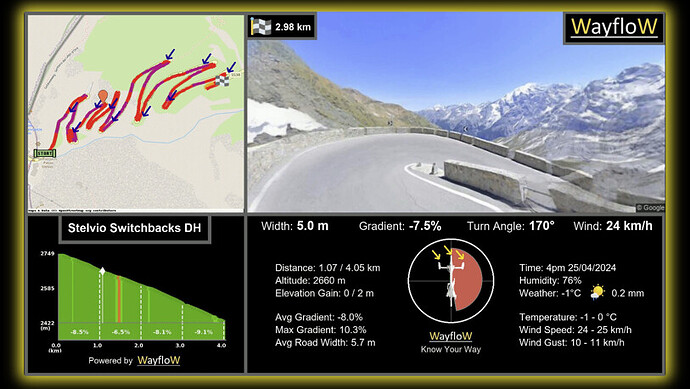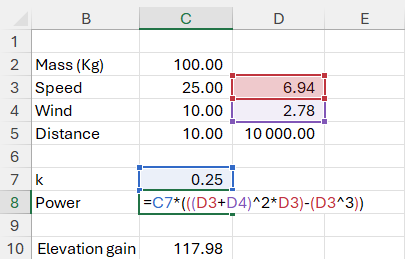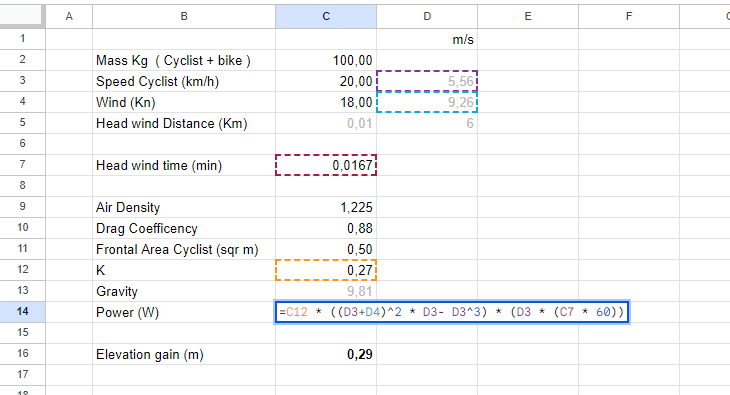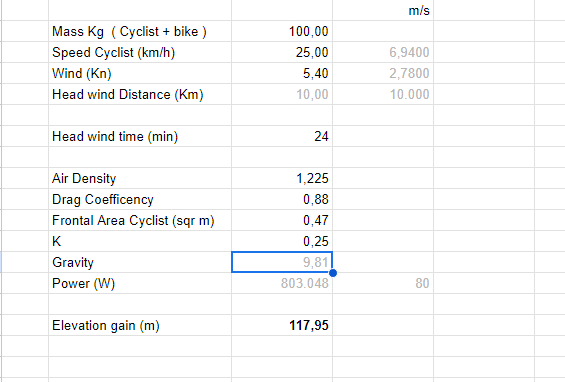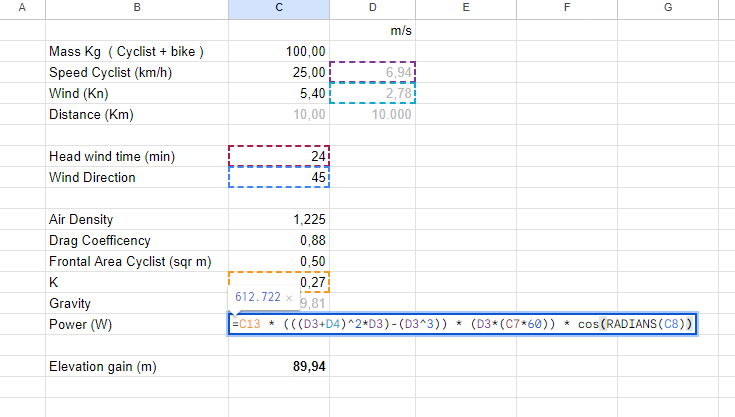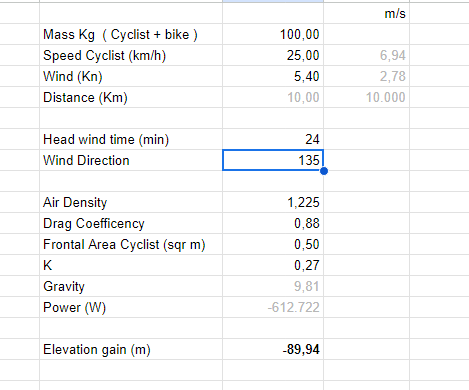now that we ahve all those fancy Wind data, I will be very cool to transform that in felt elevation while cycling, there is a web site called windsock thay does something lik that , I am interested becasue I live in a extemely windy place where cycling with 12-17 knots sometimes in the norm.
I hove find a bit of math around the web :
Formula for Wind to Elevation Gain:
Elevation Gain = {K * [(Vr + Vw)^3 - Vr^3] * d} / ( m * g * Vr )
Variables:
-
k : Aerodynamic drag constant, approximated as:
k = 1/2 * Ad * Dc * A • Ad : Air density (~1.225 kg/m³ at sea level) • Dc : Drag coefficient (~0.88 for a typical cyclist) • A : Frontal area (m², ~0.5 for a typical cyclist)
k is typically around 0.2–0.3 for most cyclists in real-world conditions.
-
Vr : Rider speed in m/s.
-
Vw : Wind speed in m/s (positive for headwind, negative for tailwind).
-
d : Distance ridden in meters.
-
m : Total mass of rider and bike in kg.
-
g : Gravitational constant, 9.81 m/s².
Simplification for Practical Use:
• Use a default value of k approx 0.25 unless you have specific measurements.
• Convert Vr and Vw from km/h to m/s by dividing by 3.6.
Example:
A cyclist:
• Mass ( m ) = 90 kg (rider) + 10 kg (bike) = 100 kg
• Speed ( Vr ) = 25 km/h = 6.94 m/s
• Wind speed ( Vw ) = 10 km/h = 2.78 m/s (headwind)
• Distance ( d ) = 10,000 m (10 km)
- Calculate the power effect:
Power = k * [ (6.94 + 2.78)^3 - 6.94^3]
Using k = 0.25 :
Power = 0.25 * [ 9.72^3 - 6.94^3] = 0.25 * (918.99 - 334.38) = 146.15 W
- Convert to elevation:
Elevation Gain = (146.15 * 10,000)/(100 * 9.81 *6.94)
Elevation Gain =~ 214m ( fixed typo )
This means a 10 km/h headwind over 10 km at 25 km/h feels like climbing an additional 214 meters of elevation.
You can use this formula to estimate for different conditions. Let me know if you need specific help calculating for your scenario!
possibly these can be graphed for an activity and have have that as a delta pplied to the elevation graph
here the page to that service I was mentioning
https://mywindsock.com

